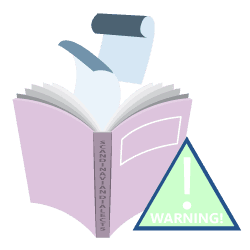We can say that a language is safe if its words are transmitted from generation to generation and the younger people are able to speak it fluently. In order to see which of the Scandinavian dialects are endangered, we first need to understand what an endangered language is.
List of Endangered Scandinavian dialects

Scandinavian Dialects
A language spoken by children, usually only at home is endangered, but a language that children learn more as their native language is definitely threatened. Seriously endangered is the language spoken by the older generations or parents, but their children neither speak, nor understand the language. Critically endangered is a language that the youngest speakers are grandparents and older, and they speak the language partially and infrequently, while the extinct language is considered language that has no general speakers.
Scandinavia is a Northern European region that covers the three kingdoms of Sweden, Denmark, and Norway. These three countries share strong linguistic, historical, and cultural ties. Most of the national languages of these three countries are mutually intelligible. The Scandinavian dialects belong to the group of languages called North Germanic Languages. Each major language in the Scandinavian region, Danish, Swedish, and Norwegian, has multiple dialects. The more the distance between areas, the more the differences between the dialects of those area will be.
When a language becomes endangered, that means it has only a few speakers left. When that language is not taught to the young generations and the older generations who knew the language pass away, it becomes extinct. Languages become extinct when children have to learn English or any other language for academic reasons, and their parents don’t burden them with the native language. As a result, the native language doesn’t get passed on to the children, and it dies slowly.
Swedish dialects
In the list of Vulnerable Scandinavian dialects is the Scanian dialect (also spoken in Denmark).
Definitely endangered: Dalecarlian dialects, Modern Gutnish, North Saami language (also spoken in: Finland, Norway and Russia) and the Yiddish language (also spoken in: Germany, Belarus, Austria, Belgium, Estonia, Denmark, France, Finland, Hungary, Norway, Romania, Netherlands, Poland, United Kingdom, Russia, Slovakia, Switzerland, Czech Republic and Ukraine).
Severely endangered languages are: Lule Saami (also spoken in Norway) and South Saami language (also spoken in Norway).
And critically endangered are Pite Saami language (also spoken in Norway) and Ume Saami language.
Finnish dialects
In the list of definitely endangered Finnish languages are: Karelian language (also spoken in Russia), North Saami language (also spoken in: Norway, Russia and Sweden), Olonetsian language (also spoken in Russia), Romani language (spoken across Europe), Njukča and Yiddish language (also spoken across Europe).
Severely endangered languages are: Inari Saami and Skolt Saami language (also spoken in Norway and Russia).

Danish dialects
In the list of vulnerable Danish languages are Low Saxon language (also spoken in: Germany, Netherlands, Poland and Russia) and Scanian dialect (also spoken in Sweden)
Definitely endangered: South Jutish (also spoken in Germany) and the Yiddish language.
Norwegian dialects
In the list of definitely endangered Norwegian languages are: North Saami language (also spoken in: Finland, Russia and Sweden).
Severely endangered languages are: Lule Saami language (also spoken in Sweden), Skolt Saami language (also spoken in: Finland and Russia) and South Saami language (also spoken in Sweden)
And critically endangered is Pite Saami language (also spoken in Sweden).
Icelandic
This language is not yet on the list of endangered languages, although more and more people use English instead of Icelandic. Also, the industry has recently decided to no longer add Icelandic menus on some electronics (TV sets, phones).
According to the list above, there are quite a few Scandinavian Dialects which are critically endangered and may disappear during the next 20 years. We’re slowly loosing our roots for the good of progress. Whether that is a good idea or not, remains to be seen in the future.
Linguistic Diversity and Evolution
The official language of a country is often distinct from individuals’ mother tongue, representing a common language for communication. Native speakers primarily use their mother tongue, while minority languages coexist, reflecting linguistic diversity. In the 20th century, the prominence of certain languages as dominant or official became more pronounced.
In the context of European languages, the Swedish language, as a Scandinavian language, holds significance. Understanding the dynamics of dominant and foreign languages contributes to appreciating the rich tapestry of linguistic influences in diverse societies.
The dominant language in a region often contrasts with individuals’ native tongues, emphasizing the diversity of linguistic landscapes. In some cases, a separate language, such as Southern Sámi, reflects the distinct identities within a broader linguistic context.
Swedish speakers, for instance, may encounter linguistic variations, and in the 18th century, certain languages were considered “dead.” Exploring linguistic nuances extends to specific language features, like Norwegian verbs, showcasing the intricate tapestry of language evolution. Understanding these dynamics provides insights into the historical and cultural dimensions of language use in diverse communities, such as South Sámi speakers preserving their unique linguistic heritage.
Language Dynamics Of Grammar and Diversity
Navigating language issues often involves considering grammatical gender, an aspect not present in English phrases. In Norwegian, encountering loanwords from Swedish introduces variations and optional forms, highlighting the dynamic nature of language evolution. The Norwegian Language Council addresses these complexities, striving to maintain linguistic clarity and coherence.
Additionally, the presence of immigrant languages further enriches the linguistic landscape, contributing to the diversity of expression in a multilingual society. Understanding the interplay of grammatical elements and the incorporation of loanwords sheds light on the intricate nature of language dynamics in Norwegian communication.
West Scandinavian languages, including those with a verb-second structure, exhibit interesting features in their verb systems. These languages encompass strong and weak verbs, each with distinctive conjugation patterns. Some, like English, have ergative verbs, while others maintain an infinitive verb form for simplicity.
Copula verbs play a crucial role in expressing states and identities. English verbs, often characterized by participles, highlight their dynamic nature. Classes without inflection, such as those with affirmative or indefinite inflection, contribute to the varied nuances in verbal expression. The intricacies of inflection tables for definiteness further underscore the complexity and richness of verb usage in these linguistic contexts.
Language Exploration Of Adjectives and Translation Dynamics
Exploring the inflection of adjectives, particularly in languages like North Sámi and Akkala Sámi, reveals unique linguistic structures. Examples of phrases help illustrate proper usage, while the identification of ungrammatical phrases contributes to language refinement. In question phrases, nuances in Southwestern dialects may emerge, adding depth to communicative expression. The presence of a neutral gender in certain languages poses distinctive challenges in adjective inflection.
Accessing a comprehensive collection of dictionaries aids in understanding these intricacies, and online dictionary searches become invaluable tools for learners. The broader context of multilingual website translation further underscores the dynamic interplay of linguistic elements in diverse language landscapes.
Direct translation involves faithfully rendering expressions from one language to another, often requiring an understanding of conjugation classes and patterns. While formal writing may adhere to standard conjugation, daily speech introduces colloquial elements, including frozen or shorthand expressions.
Norwegian writers, both prominent and those in daily communication, navigate these nuances to convey meaning effectively. Colloquial speech, with its informal and dynamic nature, may deviate from strict conjugation norms, creating a rich tapestry of expression. Balancing these aspects is a skill that writers employ, recognizing the dynamic interplay between formal and colloquial language in their craft.








